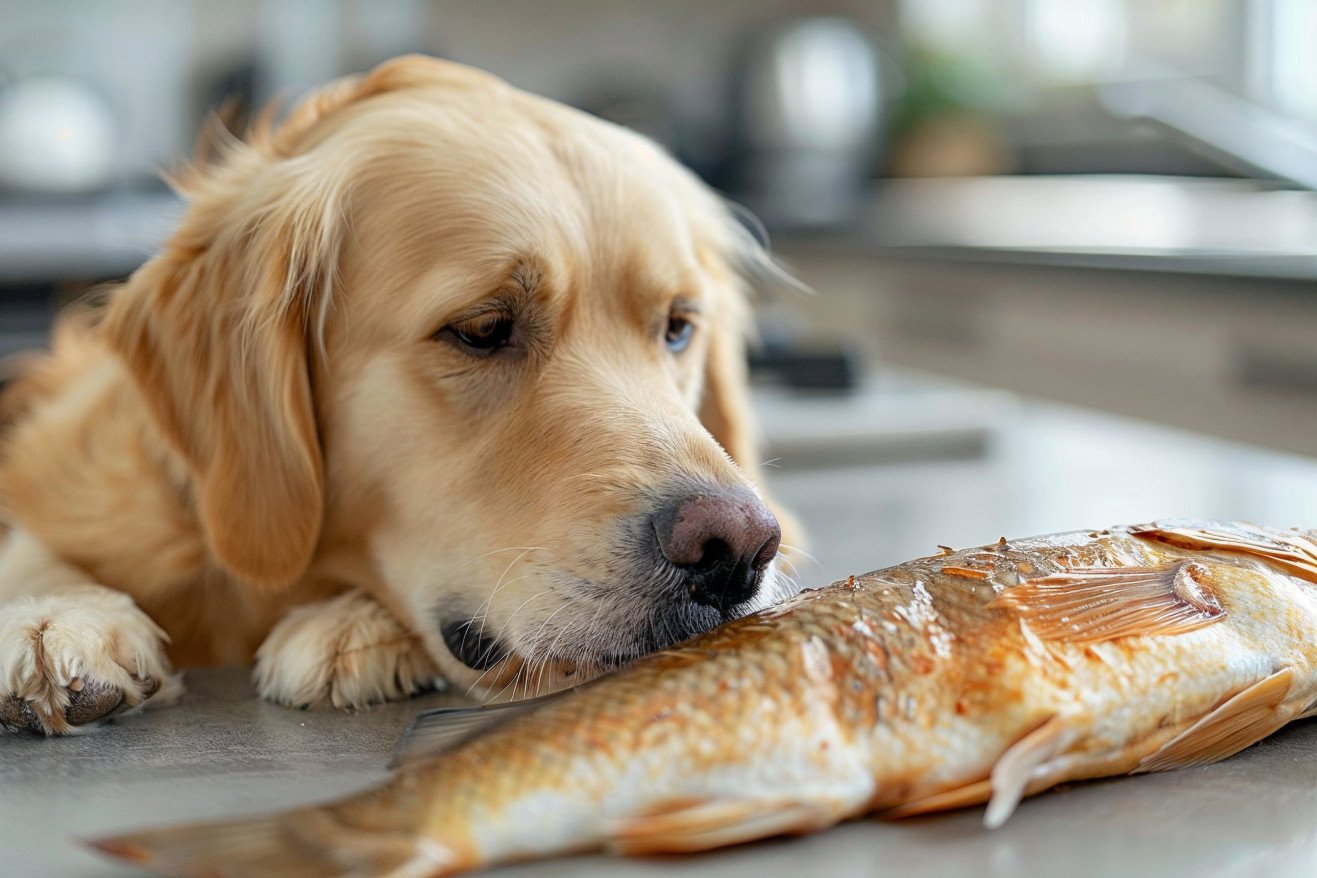Can Dogs Eat Catfish? Exploring the Pros and Cons
12 April 2024 • Updated 11 April 2024

As with many other types of fish, catfish can offer health advantages and disadvantages when it comes to being consumed by dogs. Catfish is generally safe for dogs to eat as long as it is cooked and served in moderation, but it should be prepared in a way that removes parasites and bones, which can pose a choking hazard. Unseasoned, well-cooked catfish can be a good source of healthy oils and protein for dogs.
This article will cover everything from veterinary and nutritional research to ensure that you have all the information you need to know before feeding your dog catfish as an occasional treat. This way, you can be sure that you are preparing and serving it in a way that is safe and healthy, while also being aware of any potential allergens or contaminants that could make catfish a bad choice for some dogs. By learning about the pros and cons, you can decide whether or not you want to add catfish to your dog's diet.
Can dogs eat catfish?
Nutritional Benefits of Catfish for Dogs
Catfish is a great source of lean protein that offers the essential amino acids dogs need for muscle growth. It also contains omega-3 fatty acids, which are known to help fight inflammation and are important for heart, brain, eye, and joint health.
Catfish is also packed with vitamins and minerals, including vitamin D, B vitamins, zinc, iron, and selenium, which are all important for a healthy immune system. The omega-3s and nutrients found in catfish can also help dogs maintain a glossy coat and healthy skin. Plus, catfish can be a good option for dogs with food allergies or sensitivities to common proteins like chicken or beef since it can be a hypoallergenic protein source.
While catfish is a healthy option, it should be fed as part of a balanced diet that includes other protein sources, fruits, vegetables, and grains. It's also important to remember that you should always introduce new foods in moderation. That said, knowing the nutritional benefits of catfish can help pet owners decide if they want to give their dog this nutritious fish as an occasional treat to help support their overall health.
Potential Dangers and Safety Concerns of Feeding Catfish to Dogs
Although catfish can be a healthy option for dogs, there are some potential dangers that pet parents should keep in mind. Per The Native Pet, raw or undercooked catfish can contain bacteria and parasites that can be dangerous and even life-threatening to dogs. In addition, the bones in catfish can be a choking hazard and can cause intestinal blockages if they are not removed.
In addition to these dangers, some dogs can be allergic to fish, which can cause skin issues and digestive problems. Via Smart Earth Camelina, fish allergies are less common than allergies to other proteins, but they can still happen and will need to be diagnosed through an elimination diet.
In addition, some catfish can contain high levels of mercury and other environmental toxins if they are consumed in large amounts. Per Volhard Dog Nutrition, it's important to look for catfish that contain lower levels of mercury and to make sure to feed it in moderation to prevent potential toxicity.
Whenever you're introducing catfish or any other new food to your dog, it's important to do so slowly and to watch for any negative reactions. By keeping these potential dangers in mind and taking the right steps to prevent them, pet parents can make sure that they are feeding their dogs this healthy fish in a way that is safe.
How to Prepare and Cook Catfish for Dogs
When feeding catfish to dogs, it’s important to prepare and cook the fish properly. As stated in Can Dogs Eat Catfish? [Raw, Fried & Catfish Nuggets], catfish must be cooked thoroughly to ensure that any parasites or bacteria are killed. Cooking methods that are recommended include baking, grilling, poaching, or steaming.
Before serving catfish to dogs, it is important to remove all bones, skin, and any seasonings or added oils. How To Cook Fish For Dogs - Recipes.net explains that it is important to carefully remove the bones from the fish to avoid choking hazards. It is also recommended to avoid fried or breaded catfish because it is high in fat and calories, which can lead to obesity and other health problems.
Portion control is also important when feeding catfish to dogs. As explained in I Make A Fresh Catfish Fillet Every Day for My Dog - Spoiling My Dog, it is important to feed catfish to dogs in moderation to avoid digestive issues. By following these preparation and portion control tips, dog owners can ensure that their pets can enjoy the health benefits of catfish as an occasional treat.
How Much and How Often Can Dogs Have Catfish?
Catfish should be given to dogs in moderation and as an occasional treat, not as a primary protein source. Per Can Dogs Eat Catfish? [Raw, Fried & Catfish Nuggets], it's important to make sure that the catfish treats are given in controlled amounts, up to no more than 10% of the dog's diet. Overconsumption can cause problems such as an upset stomach, diarrhea, obesity, thiamine deficiency, and bloating.
The general recommendation for most dogs is a few ounces of cooked catfish once a week. Per Dogster, puppies, pregnant, or nursing dogs may need a little more to meet their increased nutritional needs. However, it's always important to watch how your dog reacts to a new food and to check with your vet, especially if your dog has allergies or other health issues.
Portion control and making sure that catfish is given to dogs in moderation is important. By doing so and watching how your dog reacts, you can ensure that your dog gets the nutritional benefits of catfish as an occasional treat without any potential health problems.
How to Add Catfish to Your Dog's Diet
While catfish can be a good source of important nutrients, it's important to remember that it should not be the only protein in your dog's diet. The American Kennel Club explains that dogs need a well-balanced diet that includes a mix of proteins, carbohydrates, fruits, and vegetables to make sure that they get all the nutrients they need.
To that end, if you're thinking about adding catfish to your dog's diet, it's important to work with a vet or a canine nutritionist to come up with a feeding plan that's tailored to your dog's specific needs, including their age, breed, activity level, and any health issues they may have. PetMD points out that fish, including catfish, can be a helpful novel protein for dogs that have food allergies or sensitivities.
It's also important to introduce catfish to your dog's diet slowly, just like you would any other new food. The Native Pet explains that you should watch your dog carefully for signs of an adverse reaction, such as digestive upset or skin problems, when you first start feeding them catfish. However, as long as you make sure that your dog's diet is balanced and includes a variety of nutritious foods, you can feel good about feeding them catfish as an occasional treat that can help support their health.
Conclusion: What to Know Before Feeding Your Dog Catfish
Catfish can be a healthy and helpful part of a dog's diet if it's prepared and served the right way. It's important to remember that moderation, cooking, and serving are key. Make sure to talk to your vet, especially if your dog has any allergies or health issues. And always make sure to watch how your dog reacts to new foods, including catfish.
It's also important to make sure that your dog is getting a well-rounded diet that includes other sources of protein, as well as carbohydrates, and other nutrients.


